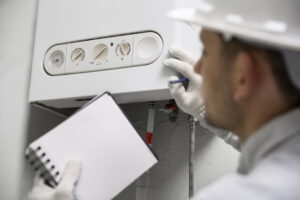What Are the Most Common Water Heater Problems?
 Your water heater functions diligently behind the scenes in your house and provides hot water for your appliances and taps. However, sometimes the water heater works a bit too hard and leads to issues that might need professional service.
Your water heater functions diligently behind the scenes in your house and provides hot water for your appliances and taps. However, sometimes the water heater works a bit too hard and leads to issues that might need professional service.
Below is a list of some common problems with water heaters, and four tips for what you should do about them:
- Water temperature problems – Water temperature problems are one of the most common issues you will come across with water heaters. Below is a list of 3 water temperature problems, their probable causes, and how you should deal with them:
- Water is cold – Usually, cold water can be caused by either a faulty thermostat, lack of power, or faulty heating component. Begin by eliminating power as the source of the problem by replacing blown fuses and resetting tripped circuit breakers. Then, check power switches to ensure that they’re switched on and the power indicators are lit. Lastly, look at your thermostat to ensure that it is getting power.
- Water is warm, yet not warm enough – If the water is not getting warm enough, the cause might be crossed cold and hot connections, an undersized water heater, or a faulty thermostat or heating element. It is possible to rule out crossed connections by switching off your water supply and turning on the hot water faucet; if the water continuously flows, there might be a crossed connection. Beyond that, it is recommended that you contact a professional to look at the water heater’s heating components and the thermostat, as well as to evaluate whether the water heater is correctly sized.
- Water is overly hot – Once water is running overly hot, it typically means your thermostat is set too high. Look at the water heater’s owner’s manual for how to adjust the temperature of the thermostat – the United States Department of Energy suggests a setting of 120 degrees Fahrenheit for the best balance of efficiency and heat.
- Water leaks – Leaks may be attributed to several causes, which include:
- leaking water tank
- bad gasket
- loose heating component bolts
- leak from plumbing connection nearby
- stuck valve
- overheating
- improper water pressure
- faulty T&P (temperature and pressure) relief valve
Look for any loose plumbing connections, and tighten them to decrease the leak.
Then, assess the loose heating component bolts, and tighten them if necessary. If the heating component is still leaking, you’ll likely have to replace the gasket. Lastly, look for leaks around or on the storage tank –as storage tanks usually corrode from the inside, you’re likely seeing the start of the end for the water heater.
You can, of course, avoid tank leak problems completely by switching over to a tankless water heater – its equipment lasts around two times as long and takes up roughly 1/4 of the space in the basement.
- Discolored water – Rusty water may be an indication of corrosion of the tank’s interior lining, oftentimes caused by failing anode rods. Call a professional water heater specialist to decide if replacing your anode rod will alleviate the issue; and if not, replace the water heater.
- Odd sounds – A build-up of sediment is usually the cause of odd sounds coming from the water heater. It is possible to try to fix the issue by flushing your water heater – view this video for tips on how you can do that. If you flush the water heater and the issue continues, or if the build-up of sediment is too great to remove, call Jamerson Plumbing Services – you might require a water heater replacement.
